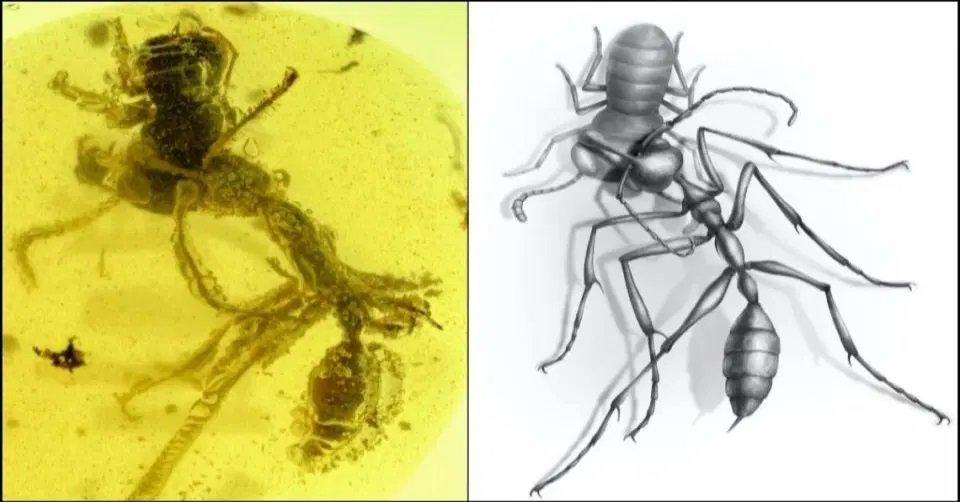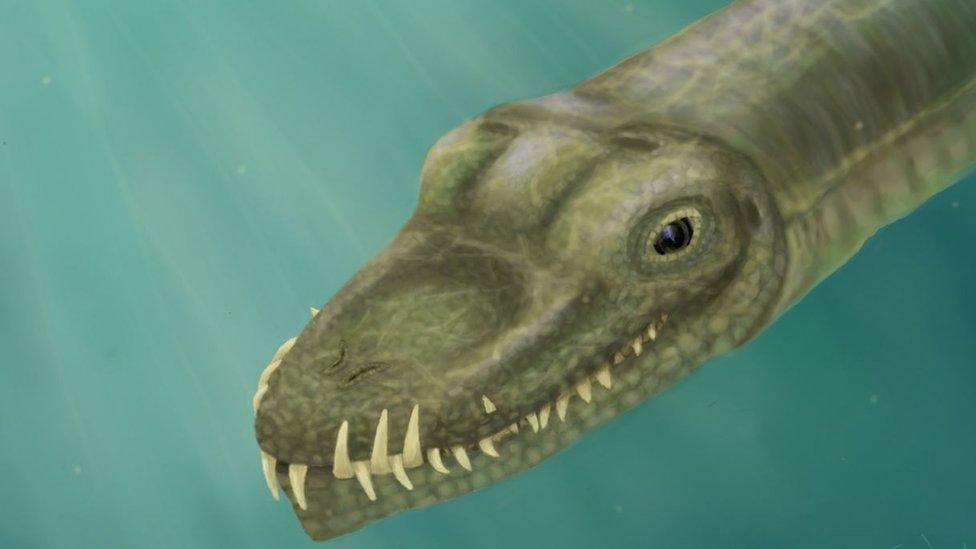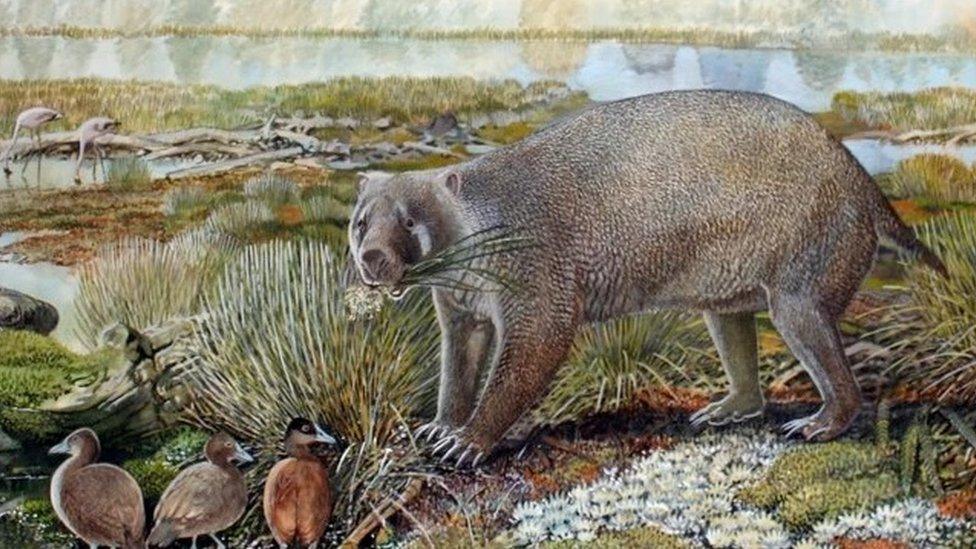‘Hell ant’ found in 99 million year old amber
- Published
- comments

A clearer view of the ant and its prey stuck in amber
A new fossil has revealed how an ancient insect captured its meals with a killer horn and unusual jaws.
The 99-million-year-old insect - nicknamed the 'hell ant' - is one of the first ants that lived on Earth and this discovery has some serious Jurassic Park vibes.
Found in the Asian country of Myanmar, the ant is preserved in amber along with its prey, an extinct relative of the cockroach.
The hell ant is slightly smaller than a 20 pence piece and the discovery shows that it ate food differently to the ants of today.
To see an extinct predator caught in the act of capturing its prey is invaluable.
Hell ant's jaws or mouth, known as mandibles, move differently to modern insects. Whereas modern ants mandibles move inwards or sideways, Hell ant's move up and down almost like a human jaw.
The prehistoric ant also had a horn on its head. Scientists have speculated how the creature would eat its food, but the fossilised amber may have provided the answer.
This species of ant, formally named Ceratomyrmex ellenbergeri, moved its sharp mandibles upwards to pin its prey against the horn between its antennae.
Once its prey was in its clutches, scientists think the hell ant would sting its victim making it unable to move.

The Hell ant used its jaws and horn to trap its prey
The findings have been reported by scientists from the New Jersey Institute of Technology (NJIT), the Chinese Academy of Sciences and the University of Rennes in France in the journal Current Biology.
Phillip Barden, an assistant professor at the NJIT's department of biological sciences and lead author on the study, said: "To see an extinct predator caught in the act of capturing its prey is invaluable.
"The only way for prey to be captured in such an arrangement is for the ant mouthparts to move up and downward in a direction unlike that of all living ants and nearly all insects.
"Since the first hell ant was unearthed about a hundred years ago, it's been a mystery as to why these extinct animals are so distinct from the ants we have today."
Unfortunately for this hell ant, it didn't finish its meal before getting stuck in tree sap. Over millions of years the sap fossilised to become a hard rock-like substance called amber, which is what scientists can discover and analyse today.
- Published13 December 2018

- Published7 August 2020

- Published27 June 2020

